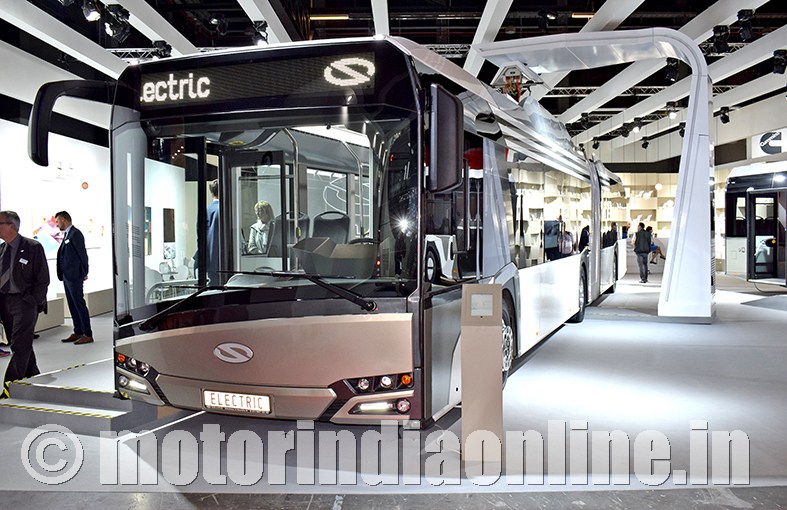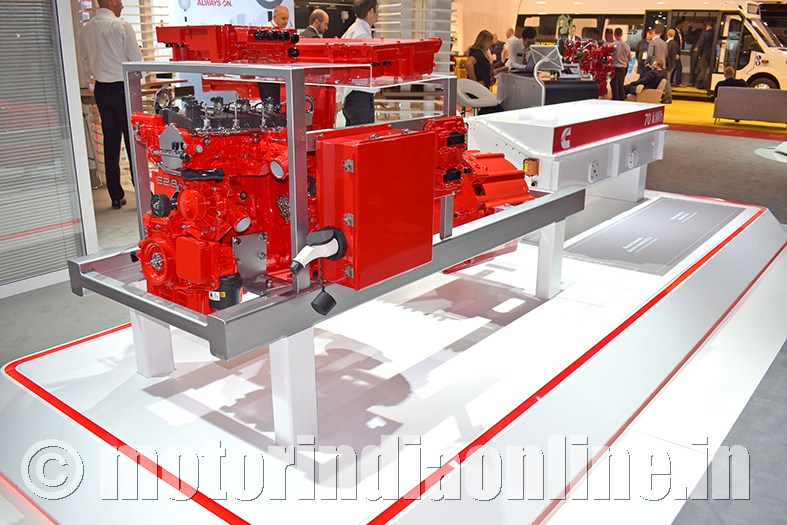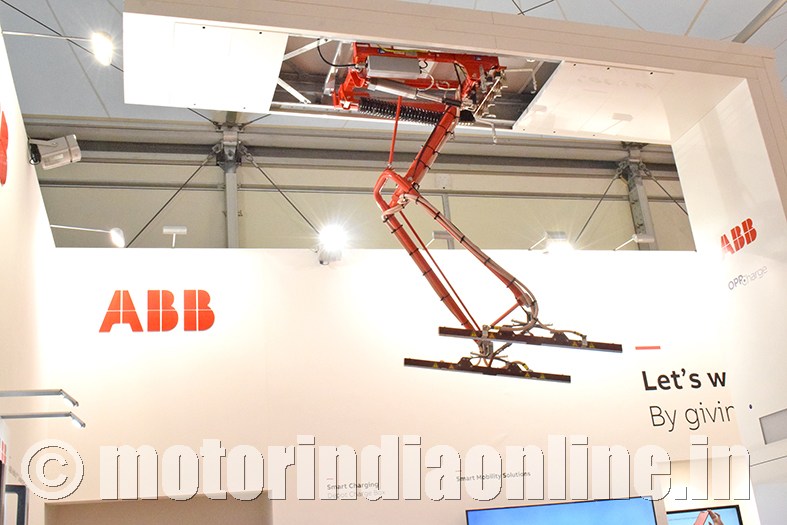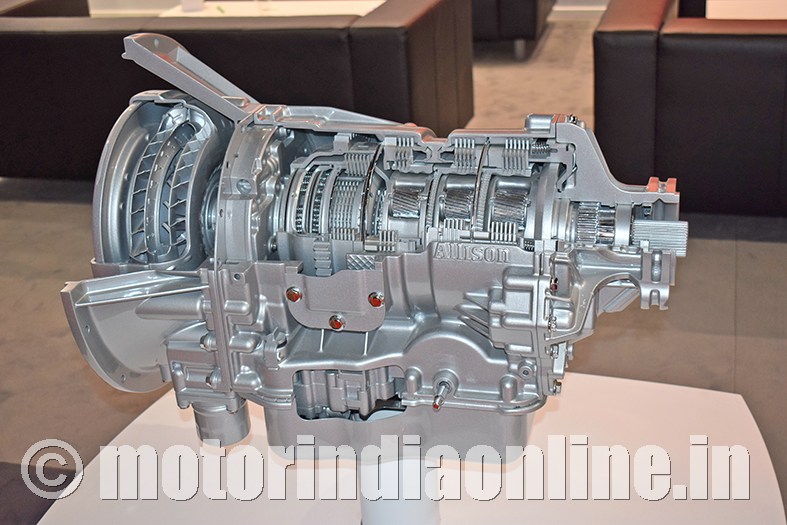Busworld Europe 2017, the 24th edition of the biannual professional bus and coach exhibition, bade a spectacular farewell to Kortrijk with participants from 36 countries, 376 exhibitors and over 37,000 visitors from 118 countries. The show that was kept open to the world media on October 19 and 20 saw numerous premieres and presentations across the 34 press conferences held. The next edition of the show will be held in Brussels during October 18-23, 2019.
With the global electric bus market expected to witness a compound annual growth rate of above 30 per cent from 2017 to 2025, this year’s Busworld focused on energy efficiency and emission reduction with every OEM showcasing technology prowess towards electric products. Since buses are perennially flexible and can be moulded to be environment friendly with safe and lower operating costs, OEMs want to add electromobility to make buses a sustainable mode of transport that is energy efficient and emission free.
OEMs bet for all-electric
Volvo Buses showcased a new version of its all-electric bus, the Volvo 7900 Electric. With significantly extended range and more charging options, the new vehicle offers bus operator’s greater flexibility. Volvo Buses has also expanded the range of options regarding the way batteries are charged. Batteries in the new Volvo 7900 Electric can be fast-charged at the route’s end stops, via the open and competition-neutral OppCharge interface. However, they can now also be charged via cable, CCS, which is the European standard for charging of electric vehicles from the mains grid.
The company also showcased two specially designed high-spec versions of the Volvo 9900 and Volvo 9700 tourist coaches. To be built in limited numbers, they are available for sale from October 20 to the end of the year.
Scania unveiled the hybrid Scania Interlink Low Decker and premiered the battery electric Scania Citywide bus. With the addition of hybrid technology, Scania met the entire scope of alternatives for suburban and intercity operations. The Scania Interlink Low Decker is presently available for diesel, biodiesel, HVO, CNG/CBG, ethanol and, with the latest addition, hybrid. It complements the Scania Citywide Low Entry Suburban, which is also available for the full range of alternative fuels as well as in a hybrid mode.
Emphasising the fact that it was the first manufacturer of electric buses, BYD at its fourth appearance at Busworld unveiled its first-ever bus built in Europe – at its new Hungary plant. BYD also used the platform for the world premiere of its all-new low-floor European specification Midibus. This new addition widens the BYD range which already covers 10.2, 10.8 and 12m single deckers, an 18m artic, double-deckers and an electric coach.
A different stand
Trying to show that it is not too late, Daimler presented both of its brands Setra and Mercedes-Benz. While many were aware of the Setra double-decker and the new Mercedes-Benz Tourismo, Daimler had a surprise in store, the Mercedes-Benz Citaro ‘mild-hybrid’. A striking different product amongst the battery-electric overload at Busworld. With it, Mercedes-Benz made a statement. The hybrid powertrain is optionally available for a large number of model variants of the best-selling urban bus, even for the gas-engined Citaro NGT. Together with the new electrohydraulic steering, the Citaro hybrid further reduces the fuel consumption of the Citaro, already famed for its efficiency, by up to 8.5 per cent.
The group also displayed its Tourismo RHD high-decker touring coach, an LHD variant of Sprinter City 45 minibus, TopClass S 531 DT double-decker bus with Active Brake Assist 4 (ABA 4), with pedestrian detection. Sources claimed it to be the world’s first emergency braking assistance system in a touring coach to brake automatically for pedestrians. ABA 4 warns the driver visually and audibly of a potential collision with pedestrians while at the same time automatically initiating partial braking. This leaves the driver with all options open for what action to take. The radar-based system can detect pedestrians up to a distance of 80 metres. ABA 4 will be available in spring 2018 for the new Mercedes-Benz Tourismo and the Setra ComfortClass 500 and TopClass 500 touring coaches.
Multiple mobility solutions
The highlight at MAN’s stand was the new MAN Lion’s Coach, which celebrated its official world premiere at the fair under the motto “Im Zeichen des Löwen” (“inspired by the lion”). The 13-metre long (13,091 mm), two-axle vehicle offers up to six more spaces than its 12-metre cousin. The touring coach is equipped with a 6-cylinder diesel engine D2676 LOH with 460 hp (338 kW) and the 12-gear MAN TipMatic automatic gearbox with Easy-Start starting assistance.
The company also delivered the 5000th NEOPLAN Skyliner at the Kortrijk show. The double-decker touring coach’s success story that began 50 years ago welcomed a new member of the NEOPLAN family in the shape of the new Tourliner. A high level of travel comfort, modern technology, economical solutions and a demanding and aerodynamic design make up the NEOPLAN Tourliner.
Solaris presented its innovative low- and zero-emission vehicle as well as a traditional propulsion-driven bus of the new generation – the premiere Urbino 18 electric, the new Urbino 12 with a serial hybrid drive and the new Solaris Urbino 10.5.
The highlights at the Irizar space was the i8, named this year as Coach of the Year 2018, the new Irizar i6S and the Irizar i4H, the latter in a hybrid version. At its second stand nearby, Irizar showcased its commitment to the future with its integral turnkey electromobility solutions for cities. The range of products exhibited also included the ie bus, a 12-metre city bus, and the ie tram, an 18-metre tram version articulated bus, both of which are 100 per cent electric zero emission vehicles, in addition to a pantograph charging system that Irizar presented at its world premiere.
Opportunity for suppliers
Cummins revealed an electrified powertrain, configurable for either a full battery electric vehicle (BEV) or a range extended electric vehicle (REEV) combining battery power with a compact engine-generator. The Cummins electrified system is ideally suited for integration into city, intercity and airport buses with a high-efficiency traction motor providing direct drive with continuous acceleration and quiet operation.
Allison Transmission displayed its nine-speed model that it first showcased at the North American Commercial Vehicle Show in Atlanta. With its deep first gear ratio and industry-leading ratio coverage, the Allison nine-speed transmission provides significant fuel savings as the highly-efficient gear train allows the torque converter to lock up early in first gear.
Additionally, the nine-speed includes an integral engine stop-start system that provides immediate transmission engagement and vehicle hold while the engine is restarted. The innovative, fully automatic transmission, for medium- and heavy-duty vehicles, will be available globally and is targeted for release in 2020.
ABB is leading the way in the development of smart Heavy Vehicle Charger (HVC) charging solutions with the launch of its HVC-Overnight Charging products. The solution promises to offer an intelligent and cost-effective solution for charging larger fleets during the night and ensuring zero emission transportation during the day.
India Day
On the sidelines of the show, the organisers of the Busworld conducted a special round-table debate-cum-discussion on the opportunities and challenges in the bus market in India. The participants included Akash Passey, Sr. V.P., Volvo Bus Corporation, and President – Business Regional International, Volvo Buses, Karolina Wennerblom, Director, Product Management and Pre-sales, Scania, Prakash Kalbag, Executive Director, MG Group, Didier Ramoudt, President of Busworld International Ltd., Mr. Rajan Sharma, MD, Inter Ads and Ananthapadmanabhan Srinivasan, Consultant, Automotive & Transportation, Frost & Sullivan, amongst many suppliers and journalists. Mr. Srinivasan who opened the discussion post his presentation on Indian Bus Segment, went on to moderate the discussion.
The consensus among the speakers was that there will be a huge demand for buses in India, and whoever can and is willing to meet the right balance of price as well as volumes will emerge as the biggest player. Replacement demand from the State Transport Undertakings (STUs) is expected to grow by 20 per cent in the next three years. The same is the case with demand generating from the school and staff transportation segment that is unique to India.
Intercity transport is also expected to grow up to 50 per cent more in the next three years. It is evident that the European manufacturers who seek volume in India will have to cater to the local needs. They can also look at options like city coaches, staff transportation and school buses for better volumes than the conventional premium intercity push back or sleeper coaches.
There is no denying the fact that while India takes its baby steps towards electromobility, an OEM will have to look for comfort, convenience as well as cost-effective solutions for people in India. The thrust has to be on moving forward with all the solutions available in alternate fuels (CNG, LNG, biofuel and ethanol) as well as the conventional BS-VI diesel engines.
Whether or not diesel and electric will co-exist or it will be all electric in the future, one thing is clear from this edition of Busworld that energy-efficient and emission reduction solutions will lead the industry and passenger mobility sector.



